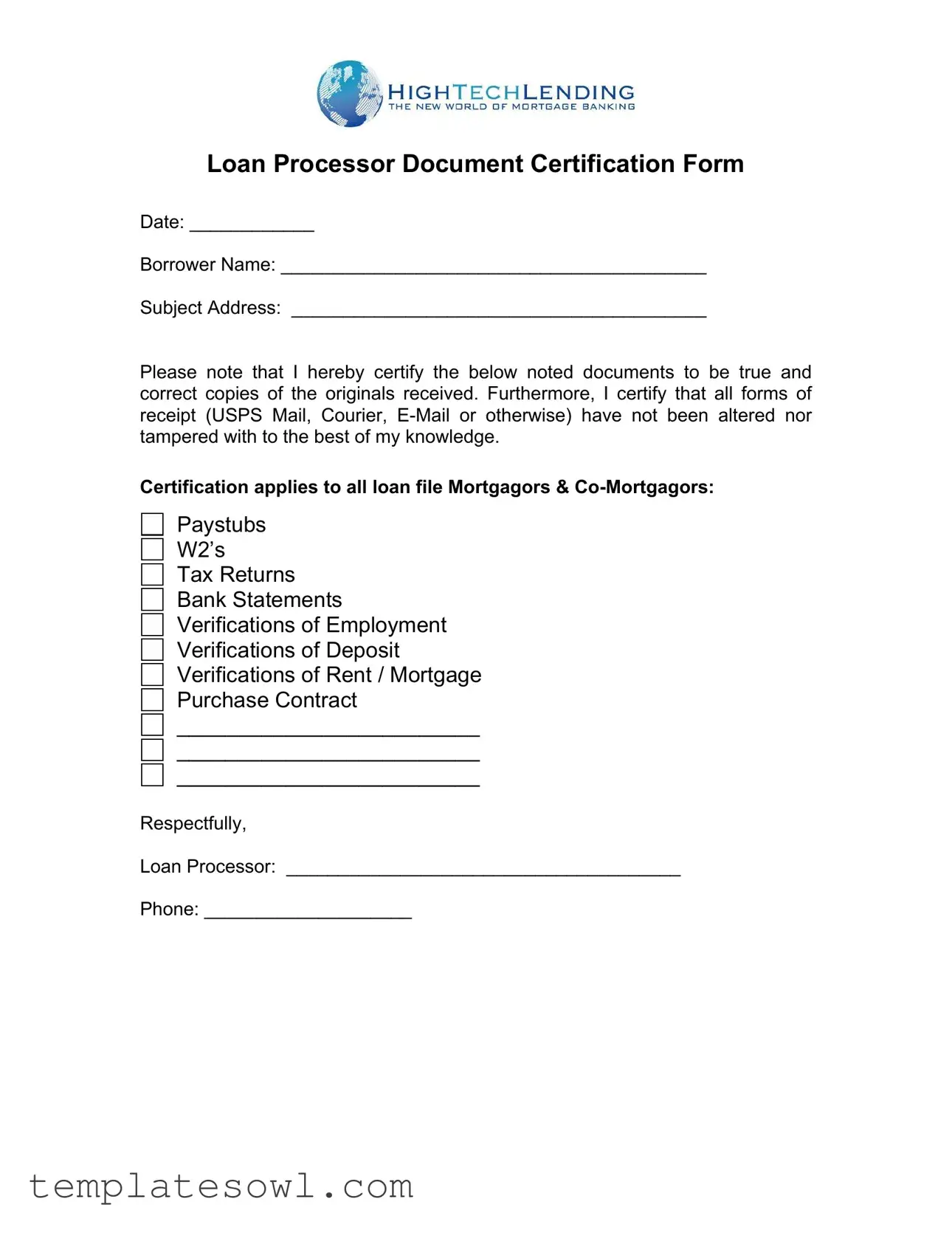What is the purpose of the Processor Certification form?
The Processor Certification form serves to certify that various financial documents related to a loan application are accurate and true copies of the originals. This provides assurance to lenders that the information has not been altered or tampered with, facilitating the evaluation and approval of loan applications.
Who needs to fill out the Processor Certification form?
This form is typically filled out by the loan processor, who is responsible for gathering and verifying the required financial documents for loan applicants. It is essential that this person has access to all necessary documentation to ensure accuracy and compliance.
What kind of documents are included in the certification?
The Processor Certification form certifies several key documents, including paystubs, W-2s, tax returns, bank statements, and verifications of employment, deposit, and rent or mortgage. Additionally, it may cover any purchase contracts related to the loan.
How does the certification benefit the loan process?
The certification helps streamline the loan approval process by providing lenders with a reliable assurance that the documents presented are authentic and have been reviewed for accuracy. This confidence can help speed up decision-making and reduce the likelihood of delays caused by document discrepancies.
Is the Processor Certification form required for all loan applications?
While many lenders require the Processor Certification form as part of the loan processing procedure, it may not be universally required for every application. The need for this form can vary based on the lender's specific guidelines and the type of loan being applied for.
What should I do if I find an error after submitting the form?
If an error is discovered after submitting the Processor Certification form, it is crucial to address the issue promptly. The loan processor should notify the lender and provide corrected information or documentation, ensuring that all records are accurate moving forward.
Can the certification be done electronically?
Yes, in many cases, the Processor Certification form can be completed and submitted electronically. This practice often simplifies the process and enhances efficiency. However, it is essential to check with the specific lender for their requirements regarding electronic submissions.
How do I fill out the date and borrower information?
When completing the Processor Certification form, the date is typically filled out first, indicating when the certification is being provided. Then, the borrower’s name and the subject property address must be accurately entered to correspond with the loan application and relevant documentation.

